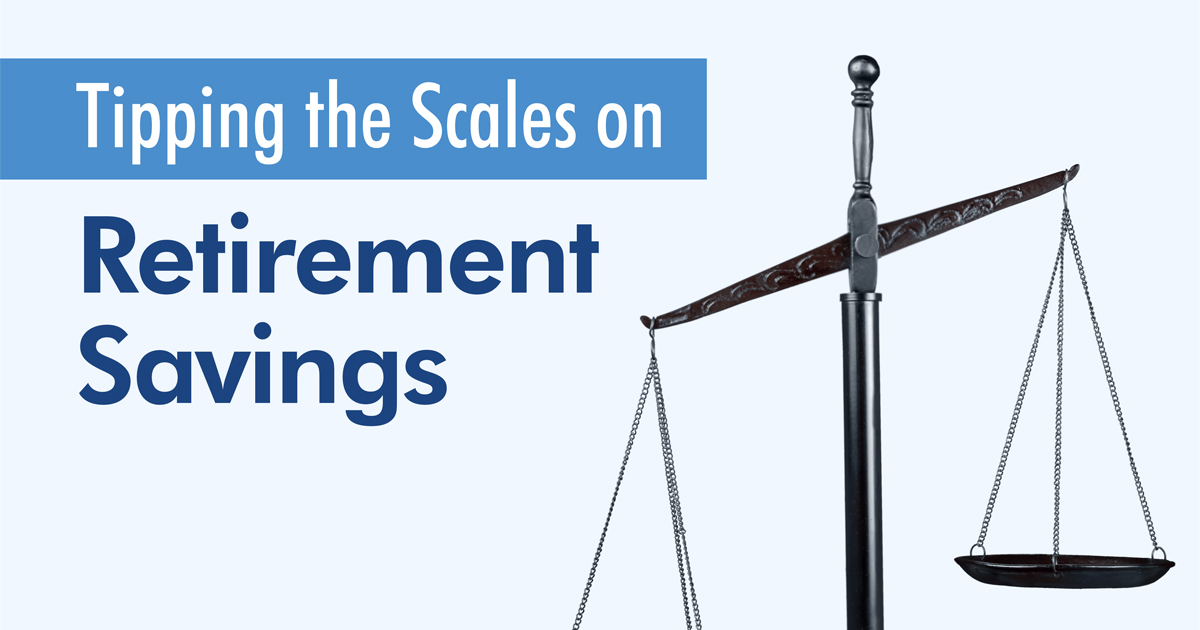A Closer Look at the Average Retirement Savings by Age
Whether you think you're ahead of (or behind) the retirement savings' curve, there are super-saver tips and trends that can help you tip the retirement savings scales in your favor.

Retirement is practically synonymous with saving. For some Americans, saving for retirement is a honed skill that improves with time and practice. In many other instances, amassing a retirement nest egg can seem daunting.
Today's pre-retirees consist of a broad range of people at varying ages and states of retirement preparation. To help identify opportunities for savings and growth across the population, we take a closer look at America's average retirement savings numbers and how you can be better prepared for your golden years.
What Is the Average Retirement Savings in America?
According to the Economic Policy Institute1, the average retirement savings of all working-age families (32-61) is $95,776.
However, since nearly half of U.S. families have no retirement account savings at all, that figure likely skews high because of retirement supersavers and older pre-retirees who boost the national average.
What is the Median Retirement Savings?
For a more inclusive perspective at what American families have in retirement savings, we look at the median retirement savings, which is more representative of the middle of the spectrum.
Looking at retirement preparedness through this lens, the median savings of all working-age families is just $5,000.
This $90,000 gap demonstrates how varied retirement savings are amongst different age groups with different financial habits. The good news is regardless of where you land on the spectrum, there are ways to you can save more.
We have broken down the national retirement savings numbers by age to help identify saving gaps and saving measures applicable to generations of Americans.
Average Retirement Savings Ages: 32-37
- Average: $31,644
- Median: $480
From building a career to starting a family, saving for retirement is often a low priority in your mid-30s. However, even small steps can be a big help in the long run. This is a great time to establish great supersaver habits like creating and sticking to a budget, keeping a spending journal to track spending habits and taking advantage of matching 401(k) contributions.
Average Retirement Savings Ages: 38-43
- Average: $67,270
- Median: $4,200
The transition from 30s to 40s often comes with important professional and financial opportunities. Whether you're eyeing a big move or life-changing decisions, for supersavers it is also a good time to coordinate family finances, establish clearly defined financial goals and begin considering how much income it will take to maintain the lifestyle you are creating.
Average Retirement Savings Ages: 44-49
- Average: $81,347
- Median: $6,200
As you near the half-way mark of your professional life, it may be a good opportunity to make up for the early years in your career when you could not save as much. For instance, some supersavers will direct funds from raises and bonuses directly into savings, or significantly step up their 401(k) contributions.
Average Retirement Savings Ages: 50-55
- Average: $124,831
- Median: $8,000
More and more Americans are working later and later. Between 2002 and 2013 the average retirement age rose by 1.7 years (to 65.4)2. Even though your golden years may seem like a distant dream, the steps taken in your mid-50s can have long-term benefits. Prepare by taking a close look at what your long-term fixed income needs will be, and consider more aggressive saving measures like reducing automotive expenses or downsizing living accommodations.
Average Retirement Savings Ages: 56-61
- Average: $163,577
- Median: $17,000
The average retirement age is 65.4, making these years an ideal time to get in the habit of living on a fixed income and within an estimated budget. Additionally, you may want to consider lifetime income retirement solutions, which can help safeguard hard-earned dollars and provide reliable paychecks long after your career is over.
Average Does Not Mean "One Size Fits All"
Every retirement is different, each with its own variables, such as: cost of living expenses, lifestyle needs, legacy plans, longevity, and more. From the long-time supersaver to those new to retirement savings, there are steps you can take to help you work toward your individual goals.
Take an informed, sound approach to saving and you can take comfort in meeting some of the universal retirement needs:
- Need for nest egg protection
- Growth opportunities
- Asset flexibility and access to funds
- Income for life
To help you get started on exploring your retirement income opportunities, try our retirement calculator or speak with your financial professional.
Sources:
1. Economic Policy Institute, "The State of American Retirement," 2016. 2. Aon Hewitt, "Past and Future Retirement," 2015
The information provided is for educational purposes only and does not constitute advice. For specific details on how this may apply to your personal situation contact your personal financial advisor or insurance agent for more details. American Equity contracts are only sold through independent agents. To obtain a listing of agents in your area contact your state’s insurance department. 1. Economic Policy Institute, "The State of American Retirement," 2016. 2. Aon Hewitt, "Past and Future Retirement," 2015
Sourced from: American Equity
https://www.american-equity.com/resources/blog/a-closer-look-at-the-average-retirement-savings-by-age
Comments
Post a Comment